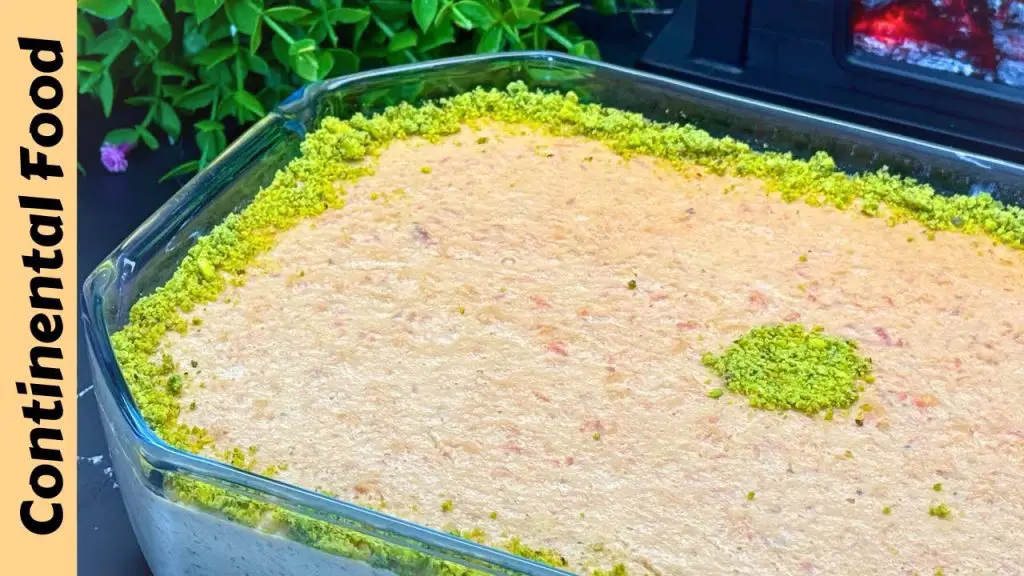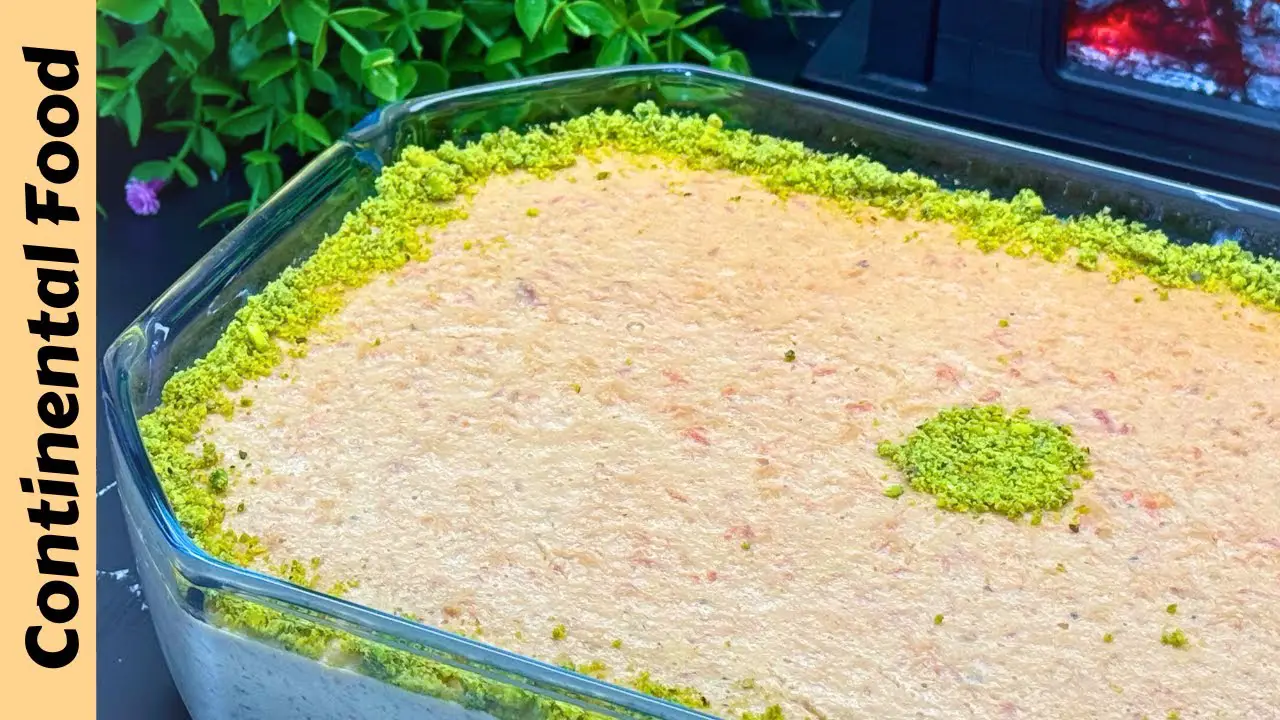Gajrela, also known as “Gajar ki Kheer” in many parts of South Asia, is a beloved sweet dish that’s especially popular in winter. This traditional dessert gajrela halwa recipe is made with carrots, milk, sugar, and a variety of aromatic spices.
It’s perfect for any celebration or when you’re simply craving something warm, comforting, and delicious.
Explore more winter favorites in our collection of Traditional Pakistani Desserts for Winter
In this recipe, I will guide you through the steps to create a mouthwatering Gajrela that will be sure to impress your friends and family. From the basic ingredients to the intricate cooking process, I’ll cover it all so you can master this sweet treat in no time!
Ingredients: Gajrela
- 2 liters of milk
- 1 cup of rice (chopped rice, soaked overnight in water)
- 1 kg of carrots (shredded)
- 1/2 cup of sugar
- 1 tablespoon of cardamom powder
- 1 cup of khoya (mawa)
- Pistachios for garnishing
Instructions:
Step 1: Preparing the Rice and Milk Mixture
To begin, soak 1 cup of chopped rice in water overnight. This softens the rice, allowing it to cook better and absorb the flavors. Once soaked, set it aside.
Next, in a large pot, pour 2 liters of milk. Heat it on medium flame until the milk comes to a boil. Stir occasionally to ensure the milk doesn’t stick to the bottom of the pot.
Step 2: Adding the Carrots
Once the milk begins to boil, add the 1 kg of shredded carrots to the pot. Carrots are the star ingredient in this dish, providing the vibrant color and natural sweetness. Continue to cook the mixture on medium flame, stirring occasionally. Let the milk reduce and thicken, as the carrots release their juice, adding flavor and texture to the dessert.
Step 3: Cooking the Rice and Carrots Together
Once the milk has thickened slightly, add the soaked rice into the pot with the carrots. Stir well to combine the rice and carrots with the milk. Cook this mixture on medium flame for about 18-20 minutes, stirring frequently to prevent burning. The rice will cook in the milk, absorbing the flavor of the carrots and milk, creating a creamy and rich base for the Gajrela.
Step 4: Adding Sugar and Spices
After the rice and carrots have cooked down and the mixture has thickened, it’s time to sweeten it. Add 1/2 cup of sugar to the pot, adjusting the sweetness to your taste. Along with the sugar, add 1 tablespoon of cardamom powder. The cardamom adds an aromatic, slightly spicy note to balance the sweetness of the dessert. Stir the mixture well to combine all the ingredients.
Step 5: Incorporating Khoya (Mawa)
Now, add 1 cup of khoya (also known as mawa) to the Gajrela. Khoya is a milk-based product that adds a rich, creamy texture and flavor to the dish. Stir the khoya into the mixture, allowing it to melt and blend seamlessly into the Gajrela. Continue to cook on low flame for an additional 18-20 minutes, letting the flavors meld together and the dessert reach a perfect consistency.
Step 6: Garnishing and Serving
Once the Gajrela has thickened to your desired consistency, remove it from the heat and let it cool for a few minutes. Then, garnish it with chopped pistachios for a delightful crunch and an extra touch of elegance.
Serve the Gajrela warm or chilled, depending on your preference. It’s a perfect dish for a cozy family gathering or a festive occasion, and it’s sure to be enjoyed by all.
Tips for the Perfect Gajrela
- Carrot Selection: Use fresh, tender carrots for the best flavor. The quality of carrots directly impacts the taste of your Gajrela.
- Consistency: Gajrela should be creamy and thick. If it becomes too runny, cook it a little longer to allow the milk to evaporate and thicken.
- Sweetness: You can adjust the sweetness according to your preference. Feel free to add more or less sugar based on your taste.
- Flavor Variations: Some people like to add a few strands of saffron or rose water for extra flavor. Experiment and make it your own!
Why Gajrela is So Special
Gajrela is more than just a dessert; it’s a dish that evokes nostalgia and tradition. The combination of carrots, milk, sugar, cardamom, and khoya creates a rich and comforting dessert that’s perfect for colder months. Its creamy texture and aromatic flavor make it a perfect treat to share with loved ones during special occasions like weddings, festivals, or family get-togethers.
Gajrela is a favorite during Eid. Explore more festive desserts in our guide to Traditional Desserts for Eid Celebrations
Historical Background
Gajrela is believed to have originated in the Mughal Empire during the 16th century, a time known for its lavish court feasts and the blending of Persian, Central Asian, and Indian cuisines.
The Mughals brought many culinary innovations to the Indian subcontinent, and desserts played a central role in their royal kitchens. The dessert, made primarily from carrots, was a symbol of the rich and opulent lifestyle of the Mughal emperors.
While the exact origins of Gajrela are unclear, it is widely believed that this dessert evolved from an ancient Persian dish called “Halwa,” which was a sweet dish made with various ingredients like nuts, fruits, and milk.
The addition of carrots to the dessert likely occurred over time as regional ingredients became more widely available.
Cultural Significance
In Pakistan, Gajrela is traditionally made during the winter months when fresh, tender carrots are in abundance. It’s a popular dessert for special occasions, including Eid, weddings, and family gatherings.
The dish is enjoyed both warm and chilled, making it versatile for different occasions and seasons.
The preparation of Gajrela in Pakistani households is not just about making a dessert; it’s also about the sense of togetherness it fosters. Families often gather to prepare and enjoy the dish, passing down the recipe through generations.
The inclusion of ingredients like cardamom, khoya (mawa), and pistachios reflects the rich cultural fusion of flavors in Pakistani cuisine.
Evolution Over Time
Over the years, Gajrela has undergone various regional adaptations. For example, while the traditional recipe includes carrots, milk, and sugar, some modern variations incorporate other ingredients such as saffron or rose water to enhance the flavor and fragrance.
The addition of khoya (mawa) is a more recent development, which adds richness and creaminess to the dish, making it even more indulgent.
Today, Gajrela remains a beloved dessert in Pakistan and the wider South Asian region, enjoyed by people of all ages. It holds a special place in the hearts of many, not just for its delicious taste but for its association with family traditions and celebrations.
Conclusion
Gajrela is a historic and cherished part of Pakistan’s culinary heritage, representing a blend of Mughal influences and local traditions. From its royal origins to its modern-day popularity, this sweet dish continues to bring people together, offering a taste of history in every bite.
✨ Enjoy this royal dessert with loved ones! 🥰


